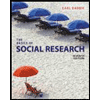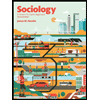Untitled document.edited (2)
docx
keyboard_arrow_up
School
Hafizabad Institute Of Business Administration, Hafizabad *
*We aren’t endorsed by this school
Course
1302
Subject
Sociology
Date
Nov 24, 2024
Type
docx
Pages
6
Uploaded by CoachThunderGoat22
Bullying is a complex and multifaceted phenomenon that affects many students worldwide.
Students can be bullied for several reasons, with differences from the bullies being the primary
reason (Eisenberg et al.). These differences include race, sexuality, religion, disabilities and
abilities, weight, and height. Other identified causes of bullying are poor academic performance,
parental neglect or poor perception, dysfunctional family units, and authoritarian parenting
(Carrera et al.). The adverse effects of bullying on the victims make it a critical issue that needs
solving. School heads, the staff, and education stakeholders continue to identify and implement
ways to alleviate bullying in schools and mitigate its negative impacts. Introducing mandatory
school uniforms is considered one of the interventions that can help mitigate the issue by
reducing bullying rates. While there are mixed findings concerning the matter, many studies have
supported the proponents' stance on how school uniforms reduce bullying rates in schools by
providing a lot of insights into how uniforms reduce bullying incidents in schools, including
enhancing unity, creating a sense of belonging, removing visibility clues for bullies to identify
their targets, and reducing peer pressure.
Social Identity Theory
Social Identity Theory (SIT) is a psychological framework developed by Henri Tajfel and John
Turner in the 1970s (Brown). SIT seeks to explain how individuals categorize themselves and
others into social groups, leading to social identity formation. The theory posits that people
derive a significant portion of their self-concept from membership in social groups, fostering a
sense of belonging and pride.
One of the critical components of Social Identity Theory is social categorization (Scheepers and
Ellemers). Individuals categorize themselves and others based on shared characteristics, such as
gender, ethnicity, nationality, religion, or even more specific groupings like sports teams or
workplace departments. Once individuals categorize themselves into a particular social group,
they tend to adopt the group's identity as their own. This process is known as social identification
and involves perceiving the group's values, norms, and goals as personally relevant (Scheepers
and Ellemers). Another critical component of Social Identity Theory is social comparison.
Individuals engage in social comparison, evaluating their group positively compared to other
groups. This comparison enhances their self-esteem and reinforces a positive social identity.
Social Identity Theory and School Uniforms
In the context of school uniforms, Social Identity Theory can be applied to understand how
introducing a uniform policy influences the dynamics of group identity within a school
community. School uniforms serve as a visible marker of group membership, and students
wearing the same uniform become part of a shared social category, fostering a sense of cohesion
and unity (Solutions Schoolwear). This shared identity contributes to a positive social
environment. Furthermore, uniforms can minimize the visibility of socioeconomic differences
among students. When everyone wears the same attire, distinctions based on clothing become
less prominent, potentially reducing the formation of social hierarchies and diminishing
opportunities for bullying related to appearance or clothing choices.
The shared experience of wearing a uniform can also instill a sense of pride in the school as a
collective entity. This collective pride may contribute to a positive school climate and reduce
intergroup conflicts, including bullying. Overall, the application of Social Identity Theory can
help us understand the complex dynamics of group identity in the context of school uniforms and
provide insights into how we can promote positive social environments in schools.
Impacts of School Uniforms on Bullying
Scholars and researchers have studied the impact of school uniforms on reducing the rate of
bullying in schools. The findings of these studies resonate with the proponents' stance that school
uniforms play a vital role in reducing the rate of bullying in school. In one such study,
Brookshire examined the connection between school uniforms, school environment, and bullying
rates. The study found that school uniforms improved the school environment by making it more
conducive to learning and allowing students to achieve the school's goals and objectives. When
students wear uniforms, the focus shifts from outward appearance to academics, leading to a
more positive school environment. This achievement, in turn, creates a sense of unity and
belonging among students, which helps reduce bullying cases. Furthermore, school uniforms
remove one clue for identifying student differences concerning their clothing (Brookshire). By
eliminating this clue, bullies find it hard to find their victims, leading to lower cases of bullying.
Uniforms are significant in indirectly cultivating a positive climate that enhances students'
interactions and relationships, eliminating prejudice, which can result in bullying.
Clothing can play diverse roles, from concealing and protecting the body from harsh weather
conditions to communicating different intentions. Among teenage students, clothing can be
perceived as a symbol of socioeconomic status. As such, children who cannot afford fashionable
clothes can be viewed as coming from poor backgrounds and attract teasing and bullying. This
aspect was explored in a study by Aaron and his colleagues, which investigated the perceptions
of school uniforms and their potential influence on socioeconomic status. In their findings, older
students were likelier to associate uniforms with reduced bullying and teasing. The authors assert
that as students mature, they may become more conscious of clothing as a status symbol and
recognize uniforms' equalizing effects (Aaron et al.). The study highlights the significance of
school uniforms in creating a positive and equal school climate for all students, regardless of
socioeconomic status. This environment alleviates bullying from clothing judgments and
apparent socioeconomic differences in apparel.
The perception of uniforms and their impacts was also explored among students and teachers in
Sweden and the United Kingdom (Edgecombe). The study suggests that uniforms may play a
role in reducing bullying, particularly indirect bullying, as they minimize visible class and style
differences (Edgecombe). From the United Kingdom, one student affirmed that students
experienced name-calling and laughter from their peers over clothing choices. Meanwhile,
several Swedish students felt uniforms would most likely curb bullying in lower secondary
schools when labels and fashion are prominent status markers. They argued that uniforms create
greater equality among peers. However, some students stated that bullying persisted after
introducing uniforms, as students were bullied based on other differences such as personality and
behavior. This revelation does not show that uniforms cannot reduce the rate of bullying. Still, it
highlights the complex and multifaceted issue of bullying that is caused by several factors and
needs more than school uniforms to eradicate.
School uniforms are widely used in schools worldwide to create a more equal and disciplined
climate, reduce socioeconomic discrimination, normalize peer groups, and promote a sense of
community among students. Adopting a public health perspective helps examine the influence of
school uniforms on students' physical, mental, and social well-being in school settings (Reidy). A
more equal and disciplined climate fostered by wearing school uniforms can indirectly deter
bullying by reducing student tensions, hierarchies, and other poor behaviors associated with
bullying. In addition, school uniforms can help reduce socioeconomic discrimination as all
students wear the same attire regardless of their family income or social status (Reidy). This
factor can promote a sense of belonging and equality among students, positively impacting their
mental and emotional well-being. Despite its effectiveness in reducing bullying, the study
identifies the limits of primarily depending on school uniforms to solve the issue of bullying
among school students. There is a need to develop other programs in school settings to
supplement school uniforms to solve the vice of bullying. Schools should incorporate wearing
school uniforms as the first step in reducing bullying and taking further steps to completely do
away with the wrong or keep it at the lowest levels possible.
School uniforms can reduce bullying by discouraging gang activity in schools. Research
conducted among 600 students in seventh and eighth grades attending middle schools that had
adopted mandatory school uniforms revealed that uniforms significantly reduced bullying,
teasing, and gang activity (Sanchez). A decline in discipline referrals and police incidents after
implementing uniforms highlights the role uniforms may play in reductions in bullying,
harassment, and peer aggression. Uniforms also reduce bullying caused by racial differences, as
Latino students attributed three benefits to wearing uniforms when compared to White students
(Sanchez). This finding is significant in showing the role of uniforms in reducing bullying rates
in school settings, as students from minority races are more likely to be bullied than those from
the majority race. While the difference of race still prevails, uniforms in school settings remove
other differences that cause bullying, thus reducing the number of bullying cases after
implementing uniforms. Overall, the findings imply that uniforms, as one component of
comprehensive efforts, may help foster positive interactions and school safety by reducing
bullying driven by clothing-based discrimination and stigmatization.
Scholars have explored the relationship between school uniforms and bullying by researching
how they regulate the bodies influencing social hierarchies and peer relations in school settings.
According to Rachel et al., uniforms aim to minimize differences and competition by making
visible markers of identity and status homogenous. By doing so, students focus on their
relationships and studies, reducing cases of bullying. While students can still find ways to judge
and bully their peers even within uniform regulations, uniforms can disrupt customary social
norms based on clothing, reducing tendencies to harass or ridicule those who appear different in
dressing. Notably, the effects of uniforms are likely to depend on the strictness of uniform
policies and the consistency of their enforcement. Strict uniform policies may allow less room
for stylistic deviation, providing fewer cues for judging peers (Rachel et al.). However, overly
rigid policing of dress can create new tensions. The authors identify school uniforms as a
significant move in reducing rates of bullying in school settings by promoting greater inclusion
and a sense of belonging.
One study conducted among middle school children in the United States and another among
students in the United Kingdom showed the positive impacts of school uniforms regarding
Your preview ends here
Eager to read complete document? Join bartleby learn and gain access to the full version
- Access to all documents
- Unlimited textbook solutions
- 24/7 expert homework help
reducing bullying rates among children. According to a study conducted among middle school
students in the U.S., introducing school uniforms positively affected the decline in bullying
incidents (Sharon). Other research among students in the United Kingdom showed that
introducing uniforms made them feel safer and less prone to attack by bullies. However, no
results link uniforms with the ability to bully due to the phenomenon's multifaceted and complex
nature and its numerous causal factors. Despite this, the piece identifies the significance of
uniforms in reducing bullying by promoting unity and inclusiveness. Uniforms can be
appropriate in reducing bullying rates among students who feel ashamed of their body sizes and
shapes. It is possible to tailor school uniforms to the unique needs of students with body shapes
and sizes that may be an easy target for bullies (Sharon). Customizing uniforms to match
students' body shapes and sizes puts some students at ease from bullying such as body shaming.
Uniforms are considered an important symbol of unity and togetherness among students.
According to a teacher interviewed for a given study, uniforms play a crucial role in creating a
sense of belonging and identity within the community (Spencer). The teacher points out that
uniforms can also prepare students for their future by teaching them to dress smartly and
inculcating a sense of discipline and responsibility. Furthermore, uniforms can help improve
academic performance by minimizing distractions and sharpening the focus on classwork. This
improvement, in turn, can lead to better student learning outcomes. In addition, the teacher
asserts that uniforms can reduce peer pressure and make it hard for bullies to identify an easy
target, as all students are dressed the same. With no concerns about dressing in the latest fashion,
students can focus on their studies and academic pursuits. By reducing the risk of bullying,
uniforms can also improve school attendance rates, as some students miss school and classes due
to the fear of intimidation by other students based on what they wear (Spencer).
In summary, a body of scholarly research and studies supports the proponents' stance on the
positive impact of school uniforms in reducing the rate of bullying. These findings consistently
highlight several ways school uniforms contribute to a safer and more inclusive school
environment. Firstly, school uniforms create a sense of unity and belonging among students. The
shift in focus from outward appearances to academics fosters a positive school environment.
Secondly, school uniforms eliminate visible markers of identity and status, making students less
susceptible to clothing-based discrimination and teasing. This factor is particularly significant in
reducing bullying related to socioeconomic differences. Furthermore, uniforms play a role in
discouraging gang activity and racial-based bullying.
Contrary to the proponents' assertions, opponents believe that school uniforms do not
significantly prevent or reduce bullying rates in school settings. The correlation between
uniforms and bullying is limited, and it's essential to consider the underlying causes of bullying
(Grabmeier). While uniforms can create a sense of unity among students, this alone may not be
enough to address the complex social dynamics, personal insecurities, and power imbalances that
contribute to bullying. Recognizing that bullying is a multifaceted phenomenon that requires a
diverse approach is essential. School administrators and educators must prioritize creating a safe
and inclusive environment for all students, addressing power imbalances, and providing
resources for students experiencing bullying. While uniforms may be a valuable addition to an
overall anti-bullying strategy, they should not be considered a solution. Ultimately, the most
effective way to combat bullying is to create a culture of respect, empathy, and kindness in
schools.
While many people believe that uniforms can help mitigate clothing-based bullying, they do not
necessarily eliminate broader issues related to socioeconomic discrimination. The studies cited
by proponents, such as Aaron et al., acknowledge that older students tend to associate uniforms
with reduced bullying. However, this does not guarantee the eradication of socioeconomic
judgments. In other words, while uniforms may help create a level playing field in terms of
attire, they do not address the underlying economic disparities contributing to bullying (Bragg
and Ringrose). Students may still find alternative ways to express social hierarchies, such as
through extracurricular activities or even the type of backpack they carry.
Additionally, schools may inadvertently contribute to socioeconomic discrimination by requiring
expensive uniforms or enforcing a dress code that is more difficult for lower-income families to
afford. It is important to note that socioeconomic discrimination is a complex issue that cannot
be solved simply by implementing school uniforms. Schools and communities must work
together to address the underlying causes of bullying and discrimination, including poverty,
social inequality, and inadequate access to resources. This approach involves creating a safe and
inclusive school environment, providing support to struggling students, and promoting empathy
and understanding among all school community members.
Uniform policies are often implemented to minimize differences between students. However, it is
essential to note that strict enforcement of these policies can sometimes lead to unintended
consequences (Pendharkar). One such consequence is the creation of new tensions within the
school environment. When rules around uniforms become overly rigid, it can restrict students
from expressing their individuality. This restriction can lead to exclusion and rebellion, as
students may feel that their voices and identities are not being heard or acknowledged. This
outcome can be particularly problematic for students who come from marginalized communities
or who have historically been excluded from mainstream culture.
Moreover, in some cases, the strict adherence to uniform regulations may contribute to a hostile
school environment. Instead of fostering inclusivity, it can create a sense of hostility and
resentment among students who feel that their freedoms are being curtailed. This can undermine
the intended purpose of uniforms and create a hostile atmosphere in the school. Therefore,
schools must strike a balance between enforcing uniform policies and ensuring students have the
freedom to express themselves. Flexibility and openness to feedback can go a long way in
creating a positive school environment that is welcoming and inclusive for all students.
Research from Sweden and the United Kingdom has shown that bullying can persist even after
the introduction of uniforms. This finding highlights the need for a more comprehensive
approach to addressing the issue of bullying, one that considers the diverse range of factors that
contribute to it. For example, academic stress, social exclusion, and cultural differences are all
factors that can contribute to bullying in schools. To effectively address this issue, educators and
policymakers must take a holistic approach, looking at the underlying causes of bullying and
implementing various interventions that address these root causes. This approach could include
providing support and resources for struggling students, promoting inclusivity in the classroom,
and encouraging students to embrace diversity. By adopting a comprehensive approach, teachers
can create a safer and more supportive learning environment for all students and work towards
reducing the prevalence of bullying in schools.
Conclusion
The proponents asserting that school uniforms play a significant role in reducing the rate of
bullying find substantial support within a body of scholarly research and studies. The
multifaceted nature of bullying, encompassing factors such as race, sexuality, socioeconomic
status, and individual differences, underscores the need for comprehensive interventions. School
uniforms, as a visible marker of group membership, contribute to a positive social environment
by fostering unity and minimizing visible markers of identity and status. These effects align with
the principles of Social Identity Theory, explaining how individuals categorize themselves into
social groups, leading to a sense of belonging and pride. The studies examined in this essay
consistently highlight the positive impact of school uniforms on the school environment,
emphasizing improved academic focus, reduced clothing-based discrimination, and
discouragement of gang or race-based bullying. Despite acknowledging the limitations of relying
solely on uniforms, such as the persistence of bullying in some cases, the cumulative evidence
supports the contention that uniforms contribute significantly to a safer and more inclusive
school climate.
However, it is crucial to recognize the counterarguments that challenge the uniform-centric
approach to addressing bullying. These include concerns about the limited impact on root causes,
the potential for unintended consequences such as rigidity and exclusion, and the need for a more
comprehensive understanding of bullying beyond attire-related factors. Striking a balance
between uniform policies and individual expression, considering socioeconomic implications,
and adopting a holistic approach that addresses the diverse causes of bullying are essential for
developing effective anti-bullying strategies in schools.
Your preview ends here
Eager to read complete document? Join bartleby learn and gain access to the full version
- Access to all documents
- Unlimited textbook solutions
- 24/7 expert homework help
Related Documents
Recommended textbooks for you

Social Psychology (10th Edition)
Sociology
ISBN:9780134641287
Author:Elliot Aronson, Timothy D. Wilson, Robin M. Akert, Samuel R. Sommers
Publisher:Pearson College Div

Introduction to Sociology (Eleventh Edition)
Sociology
ISBN:9780393639407
Author:Deborah Carr, Anthony Giddens, Mitchell Duneier, Richard P. Appelbaum
Publisher:W. W. Norton & Company

The Basics of Social Research (MindTap Course Lis...
Sociology
ISBN:9781305503076
Author:Earl R. Babbie
Publisher:Cengage Learning

Criminalistics: An Introduction to Forensic Scien...
Sociology
ISBN:9780134477596
Author:Saferstein, Richard
Publisher:PEARSON

Sociology: A Down-to-Earth Approach (13th Edition)
Sociology
ISBN:9780134205571
Author:James M. Henslin
Publisher:PEARSON

Society: The Basics (14th Edition)
Sociology
ISBN:9780134206325
Author:John J. Macionis
Publisher:PEARSON
Recommended textbooks for you
 Social Psychology (10th Edition)SociologyISBN:9780134641287Author:Elliot Aronson, Timothy D. Wilson, Robin M. Akert, Samuel R. SommersPublisher:Pearson College Div
Social Psychology (10th Edition)SociologyISBN:9780134641287Author:Elliot Aronson, Timothy D. Wilson, Robin M. Akert, Samuel R. SommersPublisher:Pearson College Div Introduction to Sociology (Eleventh Edition)SociologyISBN:9780393639407Author:Deborah Carr, Anthony Giddens, Mitchell Duneier, Richard P. AppelbaumPublisher:W. W. Norton & Company
Introduction to Sociology (Eleventh Edition)SociologyISBN:9780393639407Author:Deborah Carr, Anthony Giddens, Mitchell Duneier, Richard P. AppelbaumPublisher:W. W. Norton & Company The Basics of Social Research (MindTap Course Lis...SociologyISBN:9781305503076Author:Earl R. BabbiePublisher:Cengage Learning
The Basics of Social Research (MindTap Course Lis...SociologyISBN:9781305503076Author:Earl R. BabbiePublisher:Cengage Learning Criminalistics: An Introduction to Forensic Scien...SociologyISBN:9780134477596Author:Saferstein, RichardPublisher:PEARSON
Criminalistics: An Introduction to Forensic Scien...SociologyISBN:9780134477596Author:Saferstein, RichardPublisher:PEARSON Sociology: A Down-to-Earth Approach (13th Edition)SociologyISBN:9780134205571Author:James M. HenslinPublisher:PEARSON
Sociology: A Down-to-Earth Approach (13th Edition)SociologyISBN:9780134205571Author:James M. HenslinPublisher:PEARSON Society: The Basics (14th Edition)SociologyISBN:9780134206325Author:John J. MacionisPublisher:PEARSON
Society: The Basics (14th Edition)SociologyISBN:9780134206325Author:John J. MacionisPublisher:PEARSON

Social Psychology (10th Edition)
Sociology
ISBN:9780134641287
Author:Elliot Aronson, Timothy D. Wilson, Robin M. Akert, Samuel R. Sommers
Publisher:Pearson College Div

Introduction to Sociology (Eleventh Edition)
Sociology
ISBN:9780393639407
Author:Deborah Carr, Anthony Giddens, Mitchell Duneier, Richard P. Appelbaum
Publisher:W. W. Norton & Company

The Basics of Social Research (MindTap Course Lis...
Sociology
ISBN:9781305503076
Author:Earl R. Babbie
Publisher:Cengage Learning

Criminalistics: An Introduction to Forensic Scien...
Sociology
ISBN:9780134477596
Author:Saferstein, Richard
Publisher:PEARSON

Sociology: A Down-to-Earth Approach (13th Edition)
Sociology
ISBN:9780134205571
Author:James M. Henslin
Publisher:PEARSON

Society: The Basics (14th Edition)
Sociology
ISBN:9780134206325
Author:John J. Macionis
Publisher:PEARSON